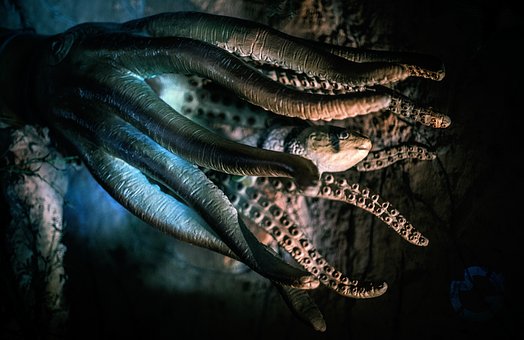
Humans in future might be able to live underwater by using well-formulated microchips that will be able to bio-hack brains. Apparently, this technology might help humans to adapt to an altogether hostile environment.
The team of experts is thinking of providing large thoracic cavities and expanded lungs to 'Human 2.0', providing them with qualities possessed by dolphins and seals to remain underwater for longer periods.
However, keeping aside these latest technological advancements, mythologies in every culture reveal how advanced the era of legends was. Mythologies are not lagging behind when it comes to nuclear war, airplanes or residing in water, rather there are numerous water myths existing in every culture.
The Indian epic Mahabharata speaks of Duryodhana who was the eldest of the Kauravas and was the son of King Dhritarashtra. The antagonist of the Indian epic, however, possessed the power of remaining underwater without the aid of any microchips for a longer period. After being defeated in the battle of Kurukshetra, Duryodhana fled and hid in a lake called Dwaipayana. He remained hidden for hours so that the Pandavas could not find him. However, Pandavas, by means of their clever strategy forced him out of it for a duel, thus leading to his death.
Turning to Greek mythology, Ceto, the daughter of Gaia and Pontus, was a hideous sea monster. Ceto was considered to be the personification of the dangers of the sea. Her husband was Phorcys and their children were called Phorcydes. Ceto, who eventually went on to become a sea monster, too possessed the ability to reside underwater.
Sirens in Greek myth were daughters of Ceto. Sirens attracted sailors to the rocks by their enchanted singing, eventually sinking their ship. The half human, half fish creatures are synonymous with mermaids.
Nereids, in Greek mythology, were sea nymphs and daughter of Nereus, the sea god. These nymphs were residents of the Mediterranean sea.
Biblical mythology, too bears evidence of an underwater being. Leviathan, the whale demon with seven heads, was believed to be king of lies or king of fish. Often associated with Satan, this sea monster has been mentioned in various literary works. Milton's Paradise Lost, for example, mentions Leviathan as a giant underwater creature, often mistaken by sailors as an island.
From Greek to Roman, Norse to Japanese, societies around the world have numerous stories associated with water deities, fascinating readers since ages. The futuristic advancement in Human 2.0 might bring mythology back to life once again.









